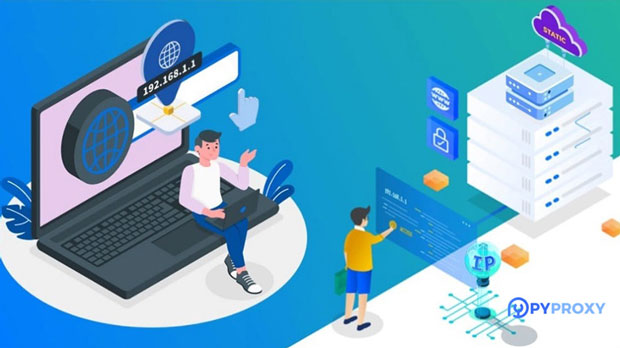What is an IP Proxy? How to get started quickly?
ip proxy is an intermediary server that acts as a gateway between a user's device and the internet. It hides the user's real IP address by using a different IP to route the requests. This offers a layer of anonymity, allowing users to browse the web securely and access geo-restricted content. ip proxies are widely used in various industries, from digital marketing to data scraping. In this article, we will dive into the concept of IP proxies, their types, and provide a practical guide on how to quickly get started with using them effectively. Whether for enhancing privacy or for business purposes, understanding IP proxies is crucial for optimizing online activities. Understanding IP ProxiesAn IP proxy is essentially a middleman between your device and the websites or services you wish to access. It takes your internet traffic and redirects it to the destination server under a different IP address. By masking your real IP address, it creates a layer of anonymity for your online activities. This technology has become increasingly important in the digital age, where privacy concerns and regional restrictions are prevalent.When using a proxy, the server receives your requests and forwards them to the intended destination, making it appear as though the request is coming from the proxy server, not from your device. This allows users to maintain a degree of privacy and access content that may otherwise be restricted in their region.Types of IP ProxiesThere are several types of IP proxies, each serving different purposes. Understanding their distinctions can help you choose the right one based on your needs.1. Forward Proxy A forward proxy is used to route client requests to the internet. It acts on behalf of the client, hiding the client's real IP and often used in corporate environments to filter traffic, monitor usage, or improve network security.2. Reverse Proxy A reverse proxy operates on the server-side, handling requests that are made to a server and then forwarding them to an appropriate internal server. It is often used to distribute traffic load, improve security, and anonymize backend servers.3. residential proxy residential proxies are real IP addresses provided by internet service providers (ISPs). They are commonly used for scraping, market research, or bypassing geographical restrictions as they appear as legitimate users from various locations.4. Datacenter Proxy Unlike residential proxies, datacenter proxies are not linked to ISPs. Instead, they are hosted in data centers and offer a faster and more cost-effective way of routing requests. They are often used for high-volume tasks like web scraping, but they are easier to detect compared to residential proxies.5. Public Proxy Public proxies are available for free, but they come with security risks and performance limitations. They are usually unreliable and can be a target for hackers.6. Private Proxy Private proxies are dedicated to a single user or organization. They provide a higher level of security and faster speeds compared to public proxies, making them ideal for sensitive business operations.Why Use IP Proxies?IP proxies offer several benefits, making them essential tools in the digital landscape. Below are some reasons why people and businesses use them:1. Anonymity and Privacy Proxies can help protect your identity by masking your real IP address. This ensures that your online actions remain private, whether you're browsing, researching, or conducting business online.2. Bypass Geo-Restrictions Many websites or services restrict access based on geographical location. Proxies allow users to appear as if they are browsing from a different location, enabling access to content that might be blocked in their region.3. Web Scraping Proxies are commonly used in web scraping to extract data from websites without getting blocked. By rotating IP addresses, proxies can ensure that scraping activities are not detected, and the process runs smoothly.4. Enhanced Security By masking your real IP address, proxies can prevent direct attacks on your device or network. They can also provide a layer of protection when accessing potentially unsafe websites.5. Load Balancing Reverse proxies, in particular, can help balance traffic loads on servers, preventing any one server from becoming overwhelmed and ensuring better performance.How to Get Started with IP Proxies?Getting started with IP proxies can be a straightforward process. Below is a step-by-step guide on how you can begin using proxies efficiently.1. Determine Your Purpose Before using a proxy, you must understand your goals. Are you aiming for better privacy? Do you want to access geo-restricted content? Or perhaps you need to scrape data from websites? Understanding your needs will guide you in choosing the right proxy type.2. Select a Proxy Type Based on your needs, choose between residential, datacenter, public, or private proxies. If you need high anonymity, residential proxies might be your best bet. For cost-effective web scraping, datacenter proxies could work better.3. Set Up Proxy Software or Browser Extension To use a proxy, you can either configure your device or browser settings manually or use proxy software. There are many tools available that can help automate the process of switching between proxies, especially for those who need to rotate IPs frequently.4. Configure Proxy Settings Once you have chosen a proxy provider, you'll need to configure your system to route your internet traffic through the proxy. This usually involves entering the proxy ip address, port, and authentication credentials into your device or software.5. Test Your Proxy Setup After configuring your proxy, it's essential to test whether it works as expected. You can check if your real IP address is hidden by visiting websites like "WhatIsMyIP." Make sure that your connection is stable and that there are no issues with accessing content.6. Use Proxy Management Tools For more advanced users, proxy management tools can help streamline the process, especially for businesses. These tools allow for the automation of IP rotations, monitoring, and optimizing your proxy usage to ensure optimal performance.Common Challenges and SolutionsWhile IP proxies are powerful tools, users may encounter certain challenges. Here are some common issues and their solutions:1. Slow Speeds Proxies, particularly public ones, can slow down your internet connection. To mitigate this, choose reliable and faster proxies, such as private proxies or datacenter proxies, and ensure that the server location matches your needs.2. Detection and Blocking Some websites are equipped with technology to detect proxy use, especially if you're using datacenter proxies. To bypass this, rotate your IP addresses regularly and use residential proxies for higher anonymity.3. Security Risks Using free public proxies exposes you to the risk of malicious attacks. To ensure security, opt for private proxies or use a reliable proxy management service that offers encrypted connections.ConclusionIP proxies are essential tools that provide privacy, security, and access to geo-restricted content. They play a significant role in modern digital activities, from web scraping to browsing securely. By understanding the different types of proxies and how to use them effectively, users can maximize the benefits they offer. Whether you're an individual seeking more privacy or a business requiring data scraping capabilities, IP proxies are valuable assets for navigating the online world efficiently.
2025-01-23
























































